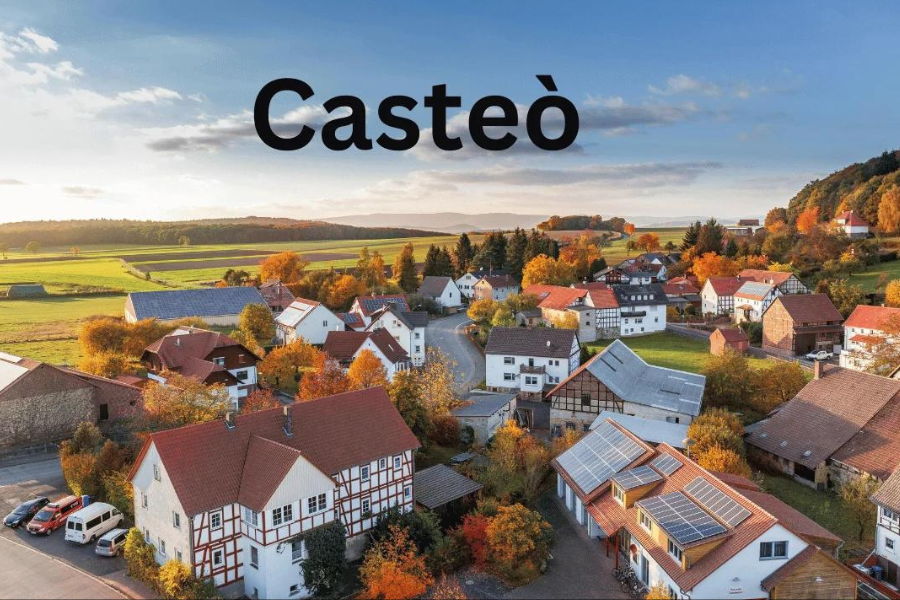Introduction
Few ideas are as fascinating and complex as Casteò in the rich fabric of human cultures. This multifaceted word deftly negotiates the knotty relationship between long-standing customs and the rapid pace of modern life. Its unique perspective allows us to examine social structures, cultural identity, and the inexorable advance towards modernity, serving as a link between the past and the present.
Social Organizations and How They Affect Communities
Casteò reflects historical caste systems that have influenced cultures worldwide, emphasizing the unending struggle for social equality and the continuous efforts to promote fairness and justice. This aspect of Casteò highlights how social changes are crucial in dismantling barriers and empowering disadvantaged communities. The struggle for equality serves as a source of inspiration, a call to action, and a monument to the human spirit’s tenacity in building a society that values and respects each and every person.
Bringing People Together via Social Reform
Social reform is at the heart of Casteò, representing the relentless pursuit of justice and equity. By challenging entrenched social hierarchies, these reforms aim to create a more inclusive and fair society. The efforts to bridge divides within communities underscore the importance of systemic change in achieving lasting social progress. Through education, policy changes, and grassroots activism, Casteò illustrates how collective efforts can lead to meaningful societal transformation.
Rich Cultural Heritage and Magnificent Architecture
Casteò is a treasure trove of cultural and historical significance, blending elements from the Roman, medieval, and Renaissance periods into a breathtakingly beautiful architectural landscape. In this world, ancient sites remain standing, each stone bearing the weight of a thousand years of history. This aspect of Casteò encourages us to delve into its cultural heritage, explore vibrant local markets, and immerse ourselves in its rich traditions.
A Patchwork of Historical Insights
A variety of influences that have woven themselves into the architectural and cultural fabric of Caste have shaped its character over centuries. From Roman ruins to Renaissance mansions and medieval castles, every building reveals the lives and legacy of the past and tells a story about the past. This extensive historical tapestry also demonstrates the ongoing legacy of human invention and inventiveness, adding to the town’s visual appeal.
Renaissance and Later Era Influence
The Renaissance era, with its emphasis on rebirth and innovation, left an indelible mark on Casteò’s cultural and architectural identity. This period of revival continues to inspire contemporary society, reminding us of the power of creativity and the lasting impact of human achievement. The blend of Renaissance artistry and modern advancements in Casteò creates a unique environment where history and innovation coexist harmoniously.
Modernity and Tradition Collide
Casteò stands as a symbol of resilience and adaptability in the face of contemporary challenges. It addresses modern issues head-on, discussing the impact of policies and the role of technology in preserving cultural practices. This evolving facet of Casteò demonstrates how our current society is shaped by the delicate balance between embracing heritage and respecting innovations.
Taking on Modern Challenges
In navigating the complexities of the modern era, Casteò exemplifies strength and flexibility. It tackles contemporary issues directly, addressing the consequences of policies and the integration of technology in preserving cultural practices. This dynamic interplay between tradition and modernity highlights the importance of adapting to new realities while maintaining a deep respect for historical roots.
A Gastronomic Tour Across Time
The area’s ability to combine tradition and innovation is demonstrated by the position’s culinary history. Dishes that are both delicious and nutritious are made by combining traditional recipes with cutting-edge cooking methods. This culinary recovery shows the enduring allure of time tested flavors and strategies, as well as honoring the locale’s broad culinary history.
The Technique of Italian Cuisine
Casteò’s culinary landscape is also enriched by its mastery of the Italian digestif, a tradition that embodies the region’s cultural sophistication. These after-dinner drinks, crafted with care and precision, offer a sensory journey through Casteò’s rich flavors and aromas. The art of the digestif reflects the area’s dedication to preserving culinary heritage while embracing modern tastes and preferences.
Maintaining Tradition, Taking Up With The Future
Casteò represents the ongoing dialogue between preserving cultural identity and embracing global trends. Its enduring essence reflects the community’s vibrant spirit and the importance of heritage in navigating the challenges of a globalized world. By maintaining a careful balance between tradition and innovation, Casteò offers a model for cultural preservation in the modern era.
Cultural Recognition in an International Society
Casteò embodies the struggle to maintain cultural identity amidst the pressures of globalization. Its vibrant community life and the ongoing significance of its heritage are testaments to the strength of local traditions. This enduring essence highlights the importance of cultural preservation in fostering a sense of belonging and continuity in an increasingly interconnected world.
Social Dynamics and Innovation
Within Caste, the interaction of tradition and innovation serves as a mirror for the broader social transformation and adaptation processes. It highlights the significance of safeguarding social ancient rarities even as society develops, guaranteeing that people in the future can gain from an earlier time. The dynamic interaction that takes place between the past and the present emphasizes the significance of innovation in preserving cultural heritage and fostering social advancement.
Handling Tradition and Modernity
Casteò’s narrative of progress and preservation is revealed through the merging of tradition and technology. Technological advancements are seen not as threats but as opportunities to enhance the dissemination of knowledge and safeguard historical practices. By digitizing ancient documents and employing innovative methods in restoration, Casteò demonstrates how technology can be a powerful tool in preserving cultural identity.
Accepting Technological Progress
At the core of Casteò’s approach to modernity is the seamless integration of technology with traditional practices. This perspective views technological progress as a means to enhance the preservation and dissemination of cultural knowledge. Whether through digitizing historical documents or employing cutting-edge restoration techniques, Casteò showcases how technology can serve as a bridge between the past and the future.
Innovations in Policy and Legal Frameworks
Casteò’s legal and policy environment is evolving to address the unique challenges of a society at the intersection of history and modernity. These initiatives aim to preserve cultural treasures, promote social equity, and foster economic development while respecting the community’s heritage and values. By enacting forward-thinking policies, Casteò provides a model for other regions to honor their heritage while building a sustainable future.
Cultural Adjustment and Worldwide Impact
Caste’s global influence and cultural adaptation stand out in an age of increasing global connectivity. It has gained international recognition for its extensive cultural heritage, attracting admiration and interest from all over the world. In addition to amplifying Caste’s cultural impact, this global presence stokes debates about how to preserve cultural diversity in the age of globalization.
The Gourmet Renaissance
Casteò’s culinary art demonstrates how the region can innovate while still honoring its traditions. To make delicious and nutritious food, modern cooking methods are combined with traditional recipes. There is a strong correlation between traditional cuisine and modern health consciousness, and this culinary revolution caters to both the palate and the community’s well-being.
Innovative Cooking Techniques and Well-Being Customs
Caste’s culinary art exemplifies the harmonious combination of modernity and tradition. Present day cooking procedures are joined with respected recipes to make dishes that are both delightful and wellbeing cognizant. The profound connection between food and cultural identity is reflected in this culinary renaissance, which not only satisfies contemporary tastes but also contributes to the community’s overall health and wellbeing.
Celebrations of Culinary Arts and Festivals
Casteò’s culinary landscape is also characterized by vibrant festivals and celebrations that bring people together. These events offer a platform to showcase traditional dishes and explore new culinary creations, fostering a sense of community and cultural pride. The fusion of classic recipes with innovative techniques creates exciting new flavors, enriching Casteò’s gastronomic heritage.
Maintaining Culinary Identity
Despite the influence of global food markets, Casteò remains steadfast in its commitment to preserving its culinary identity. By supporting local farmers, artisans, and chefs, Casteò ensures the survival of its gastronomic traditions. This dedication to sustainability and authenticity not only enriches the local culture but also serves as a model for preserving culinary landscapes in a globalized world.
Innovation and Cultural Preservation
Casteò pays close attention to its architectural legacy, aiming to preserve old buildings and incorporate them into the modern cityscape. These endeavors preserve the tangible symbols of Casteò’s past while also revitalizing them, enabling these old structures to fulfill contemporary needs while retaining their historical character.
Preservation and Restoration of Architecture
Casteò’s commitment to architectural conservation involves preserving historic buildings and integrating them into the modern cityscape. These efforts ensure that tangible symbols of the past are maintained while adapting to contemporary needs. This approach revitalizes old structures, allowing them to serve new purposes without losing their historical essence.
Crafts, the Creative Economy, and the Arts
The vibrant arts and crafts scene is an essential part of Casteò’s cultural preservation efforts. By promoting a creative economy, Casteò supports artisans who blend traditional techniques with modern materials. This fusion of the old and new ensures the vitality of Casteò’s cultural heritage, benefiting both the local community and the global audience.
Instruction and the Transmission of Cultures
The organization’s commitment to cultural transmission and education is fundamental to its lasting impact. Exhibition halls, studios, and instructive projects assume a pivotal part in sending information and abilities from more seasoned to more youthful ages. This dedication to education not only helps to preserve the heritage of the area, but it also gives the community the tools it needs to face modern challenges confidently and creatively.
Conclusion
In conclusion, Casteò represents a fascinating interplay between tradition and modernity. Its multifaceted nature allows us to explore social structures, cultural identity, and the continuous march towards modernity. Figures like Dr. Fauci, Dr. Tedros, Dr. Rancher, and Dr. Shetty epitomize various facets of this power, demonstrating that true influence in the medical field goes beyond clinical expertise. Ultimately, the power of a doctor lies in their ability to inspire, lead, and enact change on a global scale.
FAQs
1. What is Casteò?
Casteò is a concept that explores the intricate balance between tradition and modernity. It encompasses historical caste systems, social reforms, cultural heritage, and the integration of modern advancements, all while highlighting the preservation of cultural identity in a globalized world.
2. How does Casteò reflect historical caste systems?
Casteò reflects historical caste systems by emphasizing the ongoing struggle for social equality and justice. It sheds light on how these systems have influenced cultures worldwide and underscores the importance of social reforms in dismantling barriers and empowering disadvantaged communities.
3. What role does social reform play in Casteò?
Social reform is at the heart of Casteò. It represents the relentless pursuit of justice and equity by challenging entrenched social hierarchies and fostering inclusivity. Through education, policy changes, and grassroots activism, social reform aims to create lasting societal transformation and bridge divides within communities.
4. How does Casteò highlight cultural heritage and architecture?
Casteò is rich in cultural and historical significance, blending elements from the Roman, medieval, and Renaissance periods. It encourages exploration of its architectural landscape, vibrant local markets, and rich traditions, showcasing a mosaic of historical influences that have shaped its identity over centuries.
5. What impact did the Renaissance have on Casteò?
The Renaissance era left a significant mark on Casteò’s cultural and architectural identity, emphasizing rebirth and innovation. This period of revival continues to inspire contemporary society, blending Renaissance artistry with modern advancements to create a unique environment where history and innovation coexist.
6. How does Casteò address contemporary challenges?
Casteò exemplifies resilience and adaptability by addressing modern issues head-on. It discusses the impact of policies and the role of technology in preserving cultural practices, highlighting the importance of balancing tradition with innovation in navigating contemporary challenges.
7. What is the culinary significance of Casteò?
Casteò’s culinary heritage demonstrates a blend of tradition and innovation. By combining traditional recipes with modern cooking techniques, it creates dishes that are both delicious and health-conscious. The region also excels in the art of the Italian digestif, preserving culinary heritage while embracing modern tastes.
8. How does Casteò balance tradition and modernity in its cultural preservation efforts?
Casteò maintains a dialogue between preserving cultural identity and embracing global trends. By integrating technology with traditional practices and enacting forward-thinking policies, it ensures the preservation of cultural treasures while fostering economic development and social equity.
9. How does Casteò support local artisans and the creative economy?
Casteò promotes a vibrant arts and crafts scene by supporting local artisans who blend traditional techniques with modern materials. This creative economy ensures the vitality of Casteò’s cultural heritage, benefiting both the local community and the global audience.
10. What role does education play in Casteò’s cultural transmission?
Education is fundamental to Casteò’s lasting impact. Museums, workshops, and educational programs play a crucial role in transmitting knowledge and skills from older to younger generations. This commitment to education helps preserve the region’s heritage and equips the community to navigate modern challenges confidently and creatively.
11. How does Casteò handle the preservation and restoration of historic architecture?
Casteò is dedicated to architectural conservation, preserving historic buildings and integrating them into the modern cityscape. This approach revitalizes old structures, allowing them to serve new purposes while maintaining their historical essence, thus ensuring the tangible symbols of the past are preserved.
12. What is the significance of Casteò’s festivals and culinary celebrations?
Casteò’s culinary landscape is enriched by vibrant festivals and celebrations that showcase traditional dishes and new culinary creations. These events foster a sense of community and cultural pride, blending classic recipes with innovative techniques to create exciting new flavors and enrich the gastronomic heritage.
13. How does Casteò address the challenges of globalization?
Casteò embodies the struggle to maintain cultural identity amidst globalization. Its vibrant community life and the ongoing significance of its heritage highlight the importance of cultural preservation in fostering a sense of belonging and continuity in an interconnected world.
14. What is the role of technology in Casteò’s preservation efforts?
Technology plays a crucial role in Casteò’s preservation efforts. By digitizing ancient documents and employing innovative restoration methods, Casteò enhances the dissemination of cultural knowledge and safeguards historical practices, showcasing how technology can bridge the past and the future.
15. How does Casteò influence global cultural preservation discussions?
Casteò’s rich cultural heritage has gained international recognition, sparking discussions on preserving cultural diversity in a globalized world. Its model of balancing tradition and innovation offers valuable insights into maintaining cultural identity while embracing modern advancements.



